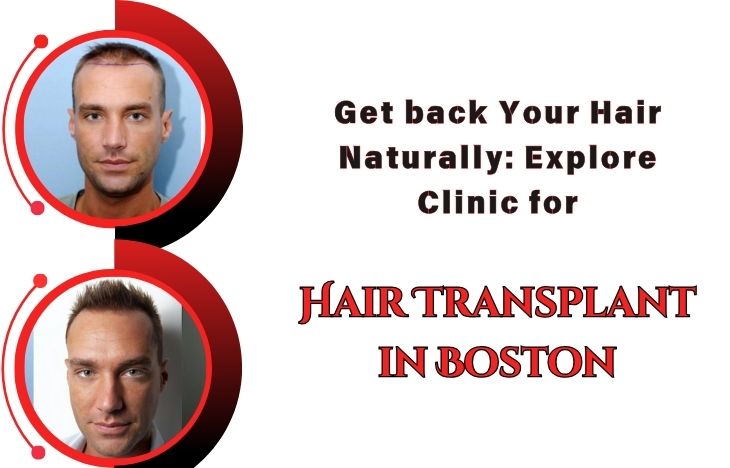
Introduction to Hair Transplant
Are you tired of looking in the mirror and noticing thinning hair or bald spots? You’re not alone. Many individuals face hair loss at some point, which can significantly impact self-esteem and confidence. Luckily, advancements in cosmetic procedures have made it easier to regain your luscious locks without resorting to temporary solutions. The techniques of Hair transplant in Boston offer a natural-looking solution that blends seamlessly with existing hair. If you’re considering this transformative journey, Boston is home to some of the best clinics specializing in hair restoration. Let’s dive into everything you need to know about getting back your hair naturally!
Types of Hair Transplant Procedures
There are primarily two types of hair transplant procedures: FUE and FUT. Each method has its own unique advantages.
Follicular Unit Extraction (FUE) involves extracting individual hair follicles from the donor area. This minimally invasive technique leaves tiny scars, making recovery easier and less noticeable.
On the other hand, Follicular Unit Transplantation (FUT) is a more traditional approach. It involves removing a strip of scalp tissue from the donor site. This can provide a larger number of grafts in one session but may leave a linear scar.
Both methods aim to restore natural-looking hair growth. The choice between them often depends on personal preference, desired results, and recommendations from your surgeon.
Understanding these options can help you make an informed decision when seeking a Hair Transplant in Boston or at the Boston Hair Clinic specifically tailored to your needs.
Finding the Right Clinic in Boston
Choosing the right clinic for a hair transplant in Boston is a crucial step. Your comfort and confidence in the procedure depend on it.
Start by researching clinics that specialize in hair restoration. Look for those with experienced surgeons who are board-certified. Their expertise can make a significant difference.
Online reviews and testimonials provide valuable insights into patient experiences. Check platforms like Google, Yelp, or specialized medical review sites to gauge satisfaction levels.
Don’t hesitate to schedule consultations with multiple clinics. This allows you to ask questions about techniques, costs, and recovery times directly from professionals.
Visit each facility if possible. The ambiance should feel welcoming. A professional staff can enhance your overall experience during this transformative journey.
Consider how well they communicate with you regarding your concerns and expectations. Trust and rapport are essential when making such an important decision about your appearance.
The Process of Hair Transplant
The process of hair transplant in Boston begins with a thorough consultation. Here, you discuss your goals and undergo an assessment to determine the best approach for your needs.
Once you’re prepared, anesthesia is administered. This ensures comfort during the procedure. Depending on the chosen technique—FUE or FUT—the surgeon will harvest hair follicles from donor areas.
In FUE, individual follicular units are extracted using a specialized tool. For FUT, a strip of scalp is removed and divided into smaller grafts. Each method has its advantages based on hair loss patterns.
After harvesting, grafts are meticulously implanted in thinning or balding areas. The precision at this stage is crucial for natural-looking results.
Typically lasting between four to eight hours, the procedure requires patience but pays off in rewarding transformations that enhance self-esteem and appearance dramatically.
Tips for Maintaining Healthy Hair Post-Transplant
After your hair transplant in Boston, maintaining healthy locks is essential. Start with a gentle touch when washing your hair. Use a mild shampoo specifically designed for post-transplant care.
Avoid hot water; lukewarm is best to soothe the scalp. Pat dry instead of vigorous rubbing to prevent any stress on newly transplanted follicles.
Incorporate a balanced diet rich in vitamins and minerals. Foods high in protein, iron, and omega-3 fatty acids can nourish your hair from within.
Stay hydrated by drinking plenty of water throughout the day. Hydration supports overall health and keeps your scalp moisturized.
Limit exposure to harsh chemicals found in styling products or treatments after the procedure. Opt for natural alternatives whenever possible.
Regularly consult with your doctor about any concerns you may have and follow their advice closely for optimal results as you embrace this new chapter in your hair journey.
Summary
Hair loss can be a challenging experience for many. Fortunately, The procedures of hair transplant in Boston offer a natural solution to restore your confidence and appearance. With various techniques available, such as Follicular Unit Extraction (FUE) and Follicular Unit Transplantation (FUT), there is an option that suits every individual’s needs.
Boston stands out as an excellent location for these treatments. The city boasts advanced clinics with experienced professionals who are dedicated to helping you achieve the best results possible. Finding the right clinic in Boston involves research and personal consultations, ensuring you feel comfortable and informed about your choices.
The process of hair transplant in Boston requires careful planning and execution. It’s essential to follow post-transplant care instructions diligently to encourage optimal healing and growth of new hair follicles. Additionally, maintaining healthy hair through proper nutrition, regular trims, and suitable products will extend the life of your transplanted hair.
If you’re considering taking this step toward regaining your youthful look or simply want more volume in your hair, exploring options like Hair Transplant at Boston Hair Clinic could be worthwhile. Embrace this opportunity for transformation; it’s about investing in yourself while restoring what was once lost.




